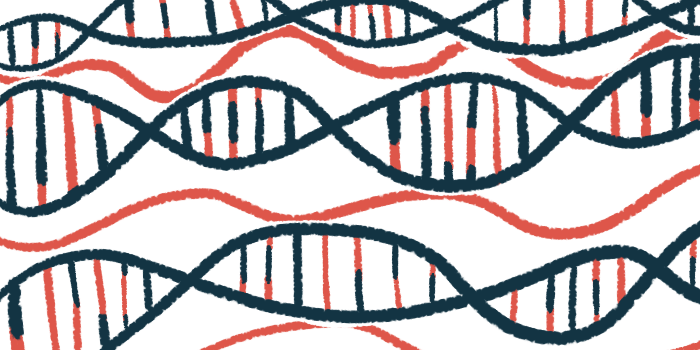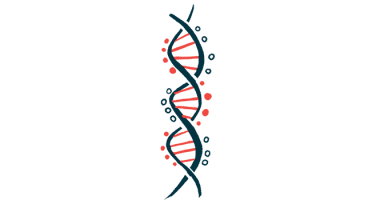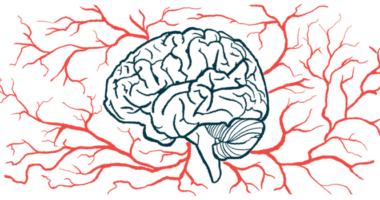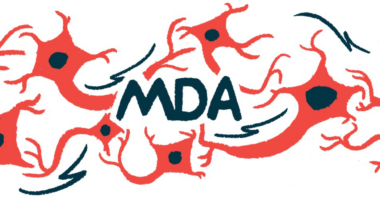MDA 2023: Expansion in WDR7 gene linked to increased ALS risk
Researchers discover expanded sequence in WDR7 in family with familial ALS

A potential new genetic risk factor for amyotrophic lateral sclerosis (ALS) has been discovered by researchers at the University of Washington.
The scientists say a mutation in which a region of the WDR7 gene is repeated more times than usual may increase the risk of ALS.
“We believe that this expansion acts as a genetic modifier to disease susceptibility, as in the repeat on its own doesn’t cause disease, but it functions in conjunction with other genetic risk factors,” Samuel Smukowski, a graduate student at the University of Washington, said in a talk at the Muscular Dystrophy Association’s MDA Clinical & Scientific Conference, held in Texas and virtually March 19 through 22.
Smukowski’s talk was titled “Functional consequences of a human-specific tandem repeat in WDR7 associated with ALS.”
More than 50 VNTR expansions have been linked to neurological diseases
The human genome contains instructions for making all of the proteins needed for the body to function. Within the genome, there are many areas called variable number tandem repeats, or VNTRs, where a particular sequence of nucleotides (the building blocks of DNA) gets repeated over and over.
A VNTR expansion is a type of mutation where a VNTR sequence has many more repeats than normal. More than 50 VNTR expansions have been linked to neurological diseases, and a mutation of this type in the gene C9ORF72 is the most common ALS-associated mutation.
Smukowski and his colleagues initially assessed data from a family affected by familial ALS. Using cutting-edge genetic sequencing technology, the team discovered a previously unreported 69-nucleotide-long VNTR sequence in the gene WDR7.
A VNTR expansion in this gene, which provides instructions for making a protein that’s involved in the function of synapses (the connections between nerve cells), appeared to be associated with ALS in the family.
Analyses of data from more than 900 people in three groups of sporadic ALS patients — one from the Answer ALS program, one from Quebec, and a third from the Coriell Institute for Medical Research — showed that ALS patients more commonly had an expanded VNTR region in the WDR7 gene compared with people who did not have ALS.
“ALS patients disproportionately have longer repeat expansions,” Smukowski said.
We believe that this expansion acts as a genetic modifier to disease susceptibility, as in the repeat on its own doesn’t cause disease, but it functions in conjunction with other genetic risk factors.
When WDR7 and other protein-coding genes are “read” to produce a protein, the genetic code is copied over into a temporary molecule called messenger RNA (mRNA). Some ALS-associated mutations are known to cause mRNA and proteins to clump up inside cells, which is thought to be toxic and contribute to the nerve cell degeneration that drives ALS.
The researchers showed that mRNA from the WDR7 gene harboring an expansion in the VNTR region was found in clumps alongside the ALS-linked protein TDP-43.
The team also showed that the repeat region could be used by cells to produce microRNAs, which are regulatory RNA molecules that bind to the mRNAs of certain proteins to reduce their levels. The larger the expansion in the WDR7 VNTR region, the more microRNAs were produced, the research showed.
In theory, this could mean that the VNTR expansion could change the levels of specific proteins in cells, ultimately dysregulating cellular activity.
Smukowski noted that several of the genes known to be regulated by these microRNAs have important roles in neurological function, with mutations in one gene, called VPS53, having been shown to spontaneously lead to ALS in mice.
“Therefore it’s possible that a high copy number of this repeat expansion is interfering with these target genes’ normal expression,” he said.
“Our findings underscore the biological impact of tandem repeat expansions in modulating susceptibility to ALS,” the scientists wrote in their abstract.
They are continuing work to understand how this WDR7 mutation, and other VNTR expansions, may affect the development and progression of ALS.








